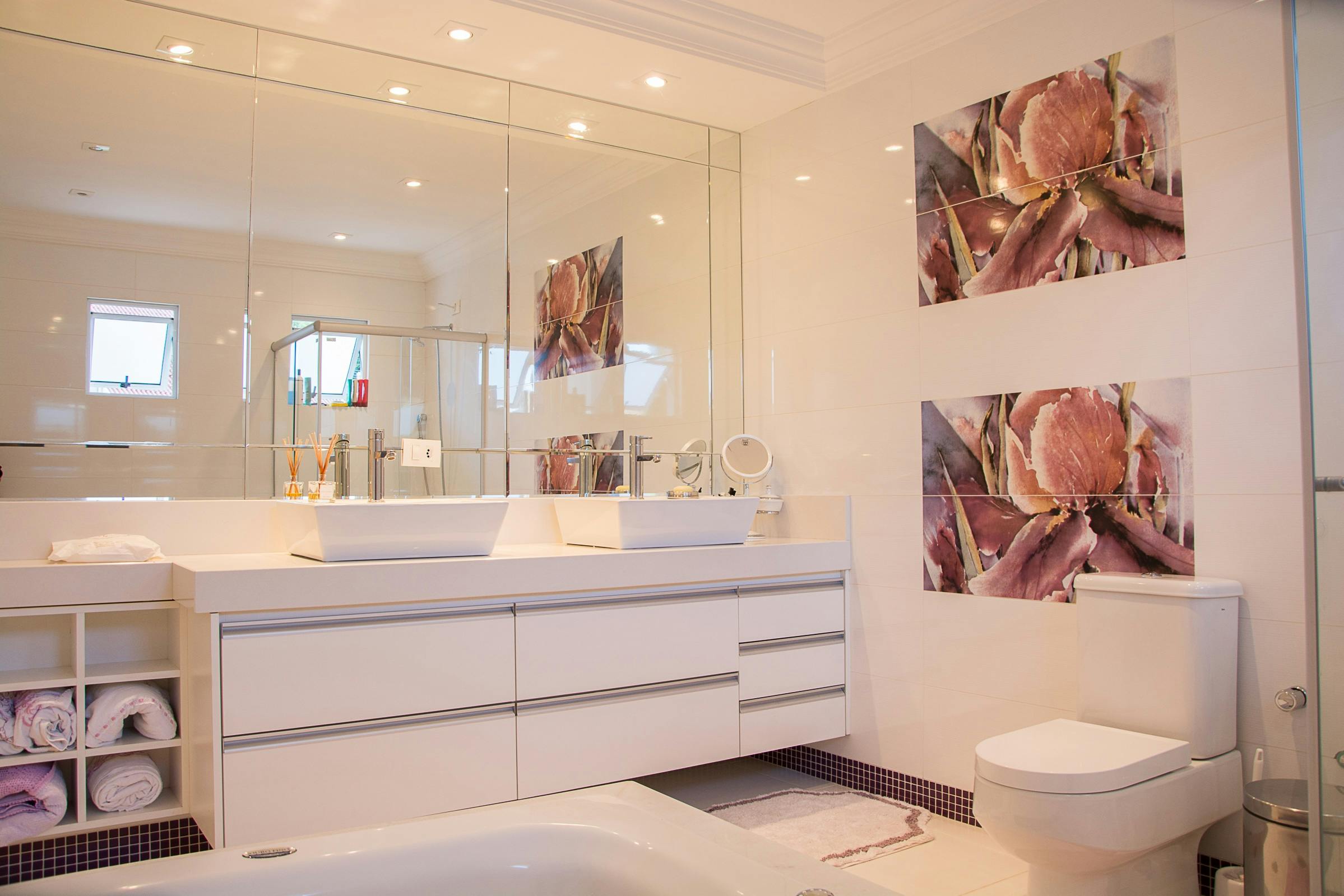Choosing the right tile orientation for your small bathroom can make a world of difference. Whether you’re aiming to create the illusion of more space or simply want a fresh look, the direction in which you lay your tiles matters.
Horizontal tiles can make your bathroom appear wider and more spacious, while vertical tiles can add height and elegance. But which option is best for your specific space? Let’s explore the benefits and aesthetics of both horizontal and vertical tiles to help you make an informed decision.
The Impact of Tile Orientation in Small Bathrooms
Choosing the right tile orientation enhances your small bathroom’s appearance. Let’s see how different orientations affect space and light.

The Optical Illusion of Space
Horizontal tiles can make your bathroom seem wider. They draw the eye sideways, giving width. In contrast, vertical tiles create height, making a low ceiling seem taller. Opt for horizontal tiles if you want a wider feel and vertical tiles for a taller, more elegant look.
How Light Interacts With Tile Placement
Light reflects differently based on tile orientation. Horizontal tiles can spread light across the width, brightening corners and widening walls. Vertical tiles bounce light up and down, enhancing the room’s vertical aspect. If your bathroom lacks natural light, horizontal placement can help distribute light better. Conversely, vertical tiles might be better for focusing illumination upwards.
Choosing Horizontal Tiles for Your Bathroom
Horizontal tiles can give your small bathroom a more spacious feel by visually widening the space.
Benefits of Horizontal Tile Installation
Horizontal tiles make the walls appear longer, which can make your bathroom feel larger. This visual elongation helps when the space feels cramped. They’re also great for enhancing the room’s width. Horizontal tiles reflect light across the room, brightening up the entire space. Laying tiles horizontally is often easier due to fewer vertical cuts, saving time and reducing waste. The aesthetic appeal of horizontal tiles can make your bathroom more inviting.
Potential Drawbacks
Horizontal tiles can make low ceilings seem even lower. This might not be ideal if your bathroom already has limited height. If the walls aren’t straight, uneven gaps may be more noticeable, potentially impacting the final look. Cleaning grout lines running horizontally can be tedious, especially in larger bathrooms. Horizontal tiles may not work well with every design style, sometimes limiting creative options.
Horizontal tile installation, when done properly, enhances small bathroom aesthetics by providing a sense of width and openness.
Opting for Vertical Tiles in Your Design
Choosing vertical tiles in a small bathroom can add height and elegance to the space.
Advantages of Vertical Installation
Vertical tiles draw the eye upward. This makes ceilings appear higher. They also add a sense of vertical continuity. You will notice a more expansive feel in confined spaces.
These tiles create dynamic visual interest. Patterns become focal points. Vertical installations can define modern or classic aesthetics.
Possible Limitations
Vertical tiles may involve more cutting. This can increase both time and expenses. Installers may face challenges aligning the tiles perfectly. Any misalignment becomes noticeable quickly.
Cleaning grout lines between vertical tiles requires effort. Taller tiles might mean stretching to reach high spots. Also, not all patterns suit vertical layouts, limiting design options.
Comparing Installation and Maintenance
Ease of Tile Installation
« HomePod vs Alexa: The Ultimate Showdown – Which Smart Speaker is Perfect for Your Home?
7 Stunning Reasons Why Potato Water is the Best Houseplant Hack You’ve Never Tried »
Horizontal tiles are generally easier to install. They require less cutting and alignment. This can save you time and reduce labor costs. Vertical tiles, on the other hand, might need more precise cuts. Aligning them can be tricky. This increases the complexity and time required for installation.
Long-Term Maintenance and Upkeep
Maintaining horizontal tiles is usually simpler. Grout lines run horizontally, making them easier to clean. Vertical tiles may complicate this task. Their grout lines can be harder to reach and clean. Horizontal installations are also less likely to show dirt and water stains. Vertical tiles might show more water streaks, especially on shower walls. This can lead to more frequent cleaning.
Conclusion
Choosing between horizontal and vertical tiles for your small bathroom depends on your design goals and practical considerations. Horizontal tiles can make the space feel wider and are easier to install and maintain. Vertical tiles, on the other hand, can add height and elegance but may require more effort in installation and cleaning.
Think about what matters most to you. Do you want a room that feels spacious and easy to maintain, or are you aiming for a taller, more elegant look? Either way, both options have their unique benefits and can transform your small bathroom into a stylish and functional space.














